Our series of preview articles about the new airplanes featured in the upcoming WW1 Wings of Glory Airplane Packs continues with a German two-seat aircraft, the Roland C.II.
The LFG Roland C.II, usually known as the Walfisch (Whale), was an advanced German reconnaissance aircraft of World War I. It was manufactured by Luft-Fahrzeug-Gesellschaft G.m.b.H.
The Roland C.II was designed to perform artillery spotting, short-range reconnaissance, and photography in support of a front-line infantry division.
It featured a monocoque fuselage built with an outer two-layer skin of thin plywood strips at an angle to each other (known as a Wickelrumpf or "wrapped body" design). For the pilot, it was fitted with a forward firing 7.92mm Spandau air-cooled machine gun synchronized to fire through the propeller arc. For the observer, it had a ring-mounted 7.92mm Parabellum machine gun.
The Roland C.II had a good Mercedes D.III 160 hp in-line six-cylinder engine, which allowed it to carry armaments, ammunition, a wireless sending unit, photographic equipment (camera and photographic plates), fuel, oil, water, and two crewman. It was faster than most Allied aircraft, but not as maneuverable. This aircraft had both lower drag and better strength per weight than typical of the time, but it was relatively slow and expensive to build.
The fuselage had an oval shape made up of the normal wood formers and longerons. It was wrapped in narrow strips of thin three-ply wood at an oblique angle to its longitudinal axis, tacked, and glued. The entire surface was then covered in doped linen. Plywood covering of this type was not unknown, but widely used in German aircraft manufacturing.
Another unusual feature of the "Walfisch" was the upper wing integration with the fuselage. Of course, upward and sideways visibility was outstanding, but downward visibility, both for the pilot upon landing and for the observer during rear-firing defense, was seriously compromised. The large single inter-wing struts also blocked viewing.
The side windows were designed to facilitate viewing and defense, but these were not sufficient and landing accidents were common, because the pilot could not quite "feel" the ground at the end of the glide path to landing.
On defense, many were lost, especially to Allied pilots who dove from height, passed behind and below the "Walfisch," and then quickly zoomed up to rake the underside. It was also vulnerable to Allied pilots who had a flexible Lewis gun on the top wing and were able to fly below and slightly behind in the observer's blind spot while tilting the Lewis gun to riddle the unfortunate Walfisch.
C.IIs began to be used in the Fl. Abt. units for reconnaissance and escort duties by the beginning of 1916. Usually, the reconnaissance machines were only equipped with a Parabellum gun for the observer and a radio transmitter. Later, a forward firing Spandau gun was added to the armament. Some later machines where able to carry bombs on an external rack under fuselage.
Because of its performance characteristics, it was often used as a strategic reconnaissance airplane, flying deep into enemy territory. Later, when allies introduced faster fighter planes, Rolands where used as close support and reconnaissance airplanes, slowly withdrawing from frontline units until June of 1917, and then transferred into training schools.
Rolands where built by LFG Roland and Linke-Hofmann by license agreement. Assuming all orders where completed, LFG Roland build 139 C.II machines and 168 C.IIa machines between the two manufacturers.
The Roland C.II in Wings of Glory
One of the Roland C.II featured in the WW1 Wings of Glory Airplane Packs was used by Manfred Von Richthofen, the most famous ace of the World War I, who has piloted many German aircraft during his life (his biografy was already presented in the article about the Fokker Dr.I aces). The other two versions presented are not linked to individual pilots, but were aircrafts used by the Luftstreitkräfte, the German Air Force in WW1, and by its unit FFA 229b.
The Red Baron piloted the Roland C.II before he gained his “title.” Von Richthofen flew in combat, early in the career, with the LFG Roland C.II while serving with Kagohl 2, Kasta 8 on the Eastern Front.
The "Kampfgeschwader der Oberste Heeresleitung," contracted in Kagohl, was the tactical bomber wing under direct control by the German Army's High Command in World War I, and Kastas (Kampfstaffel) were the tactical bomber squadrons forming the Kagohl.
The Red Baron and the other components of Kasta 8 belonged to the Deutsche Luftstreitkräfte ("German Air Force"), known before October 1916 as Die Fliegertruppen des deutschen Kaiserreiches ("Imperial German Flying Corps"). It was the air arm of the German Army (of which it remained an integral part) during World War I.
The first military aircraft to be acquired by the German Army entered service in 1910, forming the nucleus of what was to become the Luftstreitkräfte in October 1916. The initial duties of such aircraft were reconnaissance and artillery spotting in support of armies on the ground, using Roland C.IIs. The initial units of the Luftstreitkräfte, dedicated to observation, were known as Feldflieger Abteilungen (Field Flier Detachments) and had an official roster of six two-seat aircraft for each "FFA" unit.
At the start of World War I, there were thirty-three units, one allocated to each of the eight Army Headquarters and one to each of the twenty-five regular Corps Headquarters. Each unit, typically having a designation number matching the army group to which it was assigned, was equipped with either six Idflieg Category A (unarmed monoplane) or Category B (unarmed biplane) two-seater aircraft. By March 1915 the number of Feldflieger Abteilung had doubled and separate specialist fighter and bomber units, known as Jastas and Kampfgeschwader, respectively, were being developed. FFA292b, also represented in this WWI Wings of Glory series, was equipped with the Roland C.II during 1916.
Information sources: Rise of Flight, Wikipedia, The Great War Flying Museum, Historical Miniatures Journal, Flickr.

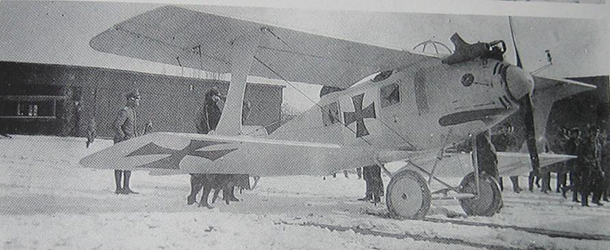
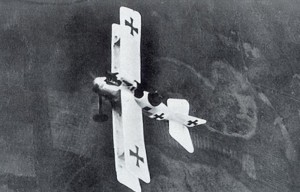
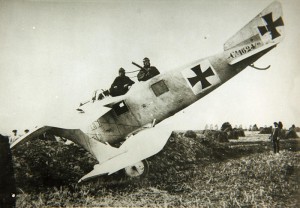
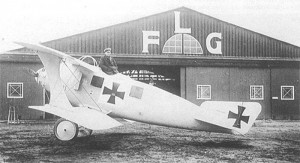
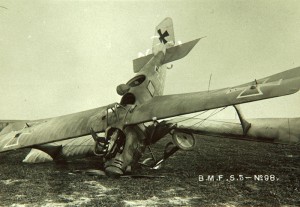

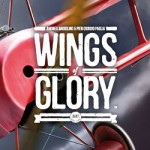






Follow Us on